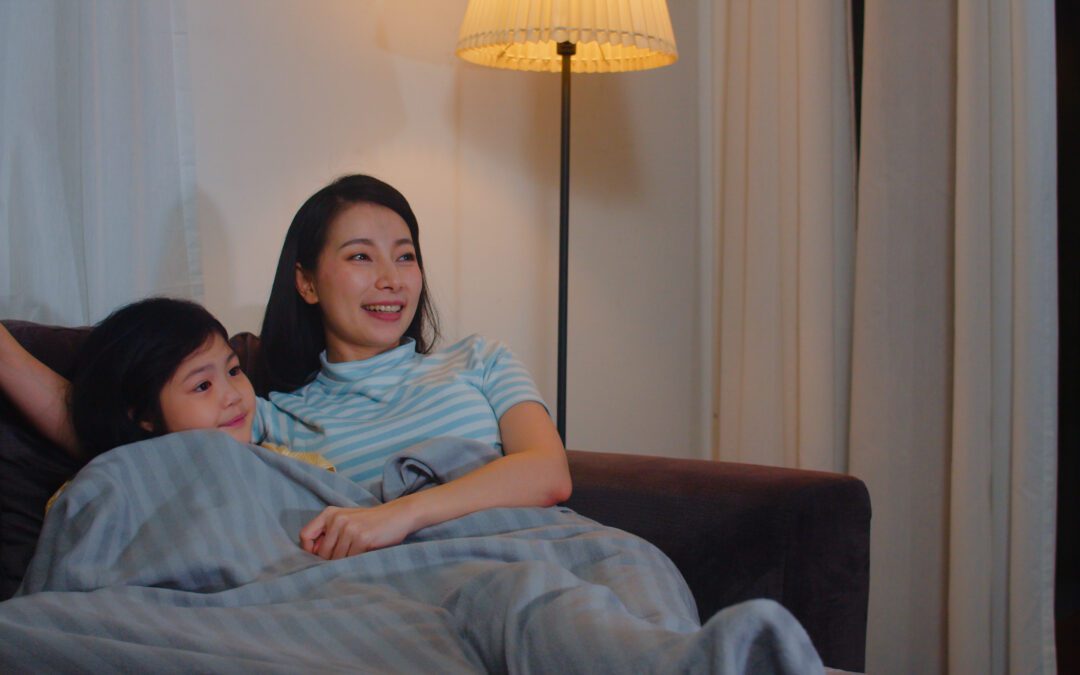Do you remember those lazy weekend mornings, sitting cross-legged in front of the television, eyes glued to your favourite educational TV shows? As we grow older and navigate the complexities of adult life, it’s easy to forget the impact these shows had on our childhood. But these classic educational programs continue to hold a special place in our hearts, not just for their nostalgia but also for the valuable life lessons they taught us. In this article, we’ll embark on a journey through some of the most iconic educational TV shows, exploring their influence on our formative years and unearthing hidden gems that continue to inspire generations of learners.

Bill Nye the Science Guy: Making Science Fun and Accessible
Who could forget Bill Nye the Science Guy? With his quirky sense of humour, wacky experiments, and infectious enthusiasm, Bill Nye revolutionized the way science was presented on television. His show, which aired from 1993 to 1998, made complex scientific concepts accessible to children and adults alike. How did he manage to do this? By incorporating humour, engaging visuals, and real-world examples that resonated with viewers.
Did you know that Bill Nye’s love for science was sparked by his astronomy teacher, Carl Sagan? In fact, Sagan’s influence is evident in Bill’s trademark catchphrase: “Science rules!” Bill Nye the Science Guy not only made science enjoyable but also demonstrated its relevance to our everyday lives. His show encouraged countless children to pursue careers in science, technology, engineering, and mathematics (STEM) fields.
Sesame Street: Learning Life Lessons with Our Furry Friends
Since its debut in 1969, Sesame Street has been a staple in the lives of millions of children around the world. What sets this show apart from other educational TV shows? Its diverse and lovable cast of characters, which includes both humans and Muppets, who taught us valuable lessons about friendship, empathy, and inclusivity.
One of the most remarkable aspects of Sesame Street is its ability to tackle challenging social issues with sensitivity and nuance. For example, in 2011, the show introduced Lily, a character experiencing food insecurity, to help children understand the realities of poverty. Sesame Street’s groundbreaking approach to education not only promotes literacy and numeracy skills but also fosters emotional intelligence and social awareness.
The Magic School Bus: Embarking on Fantastical Field Trips
Who wouldn’t want to board the magical, shape-shifting bus driven by the eccentric Ms. Frizzle? The Magic School Bus, based on the popular book series by Joanna Cole and Bruce Degen, took viewers on extraordinary adventures exploring the natural world, outer space, and even the human body.
The show’s whimsical storytelling and colourful animation were captivating, but its real magic lay in its ability to make learning feel like an adventure. By exploring topics such as photosynthesis and the water cycle in a fun and engaging manner, The Magic School Bus stimulated curiosity and fostered a love for science and discovery in young viewers. The Magic School Bus was a shining example of how educational TV shows could blend entertainment and education seamlessly, proving that learning can be fun and exciting.
The Electric Company: Boosting Literacy with a Jolt of Energy
The Electric Company was an innovative educational TV show that aired from 1971 to 1977, aiming to improve literacy among children. With its unique blend of sketch comedy, animation, and live-action sequences, the show engaged young viewers and made learning to read enjoyable. Notable guest stars like Morgan Freeman and Rita Moreno brought charisma and star power to the show, further cementing its place in television history.
The Electric Company’s memorable catchphrase, “Hey you guys!”, has stood the test of time, as has its commitment to promoting reading skills through engaging content. By breaking down complex language concepts into digestible segments, The Electric Company left a lasting impact on the way children approached reading and language arts.
Mister Rogers’ Neighbourhood: A Safe Haven for Emotional Growth
Fred Rogers, known affectionately as Mister Rogers, had a unique ability to connect with children on a deep emotional level. His long-running show, Mister Rogers’ Neighbourhood, provided a safe and nurturing space for young viewers to explore their feelings and understand the world around them. The show tackled a wide range of topics, from dealing with anger and jealousy to understanding the concept of death.
Mister Rogers’ calming demeanour, coupled with his genuine empathy, made him a trusted figure for countless children. He famously said, “Anything that’s human is mentionable, and anything that is mentionable can be more manageable.” His show’s emphasis on emotional intelligence and self-awareness has left a lasting impact on generations of viewers, teaching them essential life lessons that extend far beyond the screen.
Reading Rainbow: Soaring Through the World of Literature
“Take a look, it’s in a book, a Reading Rainbow!” This catchy tune greeted viewers as they tuned into Reading Rainbow, an educational TV show that ran from 1983 to 2006. Hosted by LeVar Burton, the show encouraged children to discover the joy of reading by highlighting diverse and engaging literature. Each episode featured a book review from a young reader, promoting a sense of community and fostering a love for storytelling.
Reading Rainbow also featured field trips and interviews with authors, illustrators, and other experts, providing valuable insights into the creative process behind some of our favourite books. With its unique approach to promoting literacy, Reading Rainbow played an integral role in cultivating a lifelong love of reading for countless children.
The Joy of Painting: Unleashing Our Inner Artists
Bob Ross, the soft-spoken and gentle host of The Joy of Painting, made the seemingly daunting world of art accessible to viewers of all ages. His show, which aired from 1983 to 1994, demonstrated that everyone has the potential to create beautiful works of art, regardless of their experience or skill level.
With his trademark catchphrases like “happy little trees” and “there are no mistakes, only happy accidents,” Bob Ross inspired countless viewers to pick up a paintbrush and explore their creativity. The Joy of Painting’s enduring popularity is a testament to the power of art as a form of self-expression and its ability to bring people together.
Square One Television: Cracking the Code of Mathematics
Aired from 1987 to 1994, Square One Television sought to make mathematics fun and engaging for young viewers. The show combined sketch comedy, music, and game show elements to present mathematical concepts in an entertaining and approachable manner. Who could forget Mathman, the Pac-Man-inspired character who gobbled up numbers while solving math problems?
Square One Television demystified mathematics by breaking down complex concepts into bite-sized, digestible pieces. By using humour, catchy songs, and memorable characters, the show made math enjoyable and helped children overcome their fear of numbers.
The Enduring Legacy of Classic Educational TV Shows
These iconic educational TV shows not only filled our childhood with laughter and adventure but also imparted valuable life lessons and inspired lifelong passions. They fostered a love for learning, creativity, and empathy that continues to shape our lives today.
As we look back on the magic of Bill Nye the Science Guy, Sesame Street, The Magic School Bus, The Electric Company, Mister Rogers’ Neighbourhood, Reading Rainbow, The Joy of Painting, and Square One Television, we are reminded of the power of television as a medium for education and personal growth. These timeless treasures serve as a testament to the transformative impact of engaging, thought-provoking content on the hearts and minds of viewers. So, let’s celebrate the enduring legacy of these classic educational TV shows and continue to share their wisdom and wonder with future generations.



